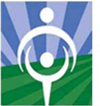
 |  |  |
| Slippery/uneven surface can cause slips, trips and falls |
Weight of bales can strain muscles |
Animal movement kicks, and bites can cause injury |
 |  |  | Non-skid shoes |
Respirator as needed | Leather gloves |
Can the child lift safely? (See “Lifting”)
Yes.
No. STOP! Children must be able to lift correctly to do this job safely.
Is the child comfortable around horses?
Yes.
No. STOP! Children who are uncomfortable around horses are more likely to be injured.
Does the bale the child will lift weigh less than 10-15% of the child's body weight?
Yes.
No. CAUTION! The child should lift the hay in smaller sections or an adult should lift the bales.
Does the child have to carry the hay less than 10- 15 yards?
Yes.
No. CAUTION! An adult should carry the hay to the feeding area.
Can the child react quickly?
Yes.
No. STOP! Because horses behave unpredictably, children need quick reactions to avoid injury.
Has the child been trained on animal behavior?
Yes.
No. STOP! Children who don't understand animal behavior are more likely to be injured.
If the child is 12 or older, has he or she been trained to use cutting tools?
Yes.
No. STOP! Training is needed to prevent injury.
Has an adult demonstrated feeding hay to horses on site?
Yes.
No. STOP! Children learn best when shown how to do the job at the worksite.
Has the child shown he or she can do the job safely 4 to 5 times under close supervision?
Yes.
No. CAUTION! An adult must watch constantly until the child shows he or she can do the job.
Can an adult supervise as recommended?
Yes.
No. STOP! The right level of supervision is key to preventing injuries.
What's the right amount? Here are suggestions- but remember, it depends on the child.
Age 10-11: LIMIT job to 20 minutes. WATCH nearly constantly at first. When the child shows he or she can do the job, CHECK every few minutes.
Age 12-13: CHECK every few minutes.
Age 14-15: CHECK every few minutes at first. When the child shows he or she can do the job, LEAVE for 15 to 30 minutes.
Age 12-13: An adult must accompany the child and WATCH constantly.
Age 14-15: WATCH constantly at first. Then CHECK every few minutes, depending on the number of animals and size of feeding area.
Age 16+: When the child shows he or she can do the job, LEAVE for 15 to 30 minutes.

North American Guidelines
for Children's Agricultural Tasks (NAGCAT)
For more information, visit: http://www.nagcat.org

National Children's Center for Rural and Agricultural Health and Safety Marshfield Clinic
1000 North Oak Avenue
Marshfield, WI 54449-5790
Phone: 1-800-662-6900 or 715-389-4999
Fax: 715-389-4996

National Farm Medicine Center
Marshfield Clinic
1000 North Oak Avenue
Marshfield, WI 54449-5790
Phone: 1.800.662.6900 or 715.389.4999
Fax: 715.389.3535
Disclaimer and Reproduction Information: Information in NASD does not represent NIOSH policy. Information included in NASD appears by permission of the author and/or copyright holder. More